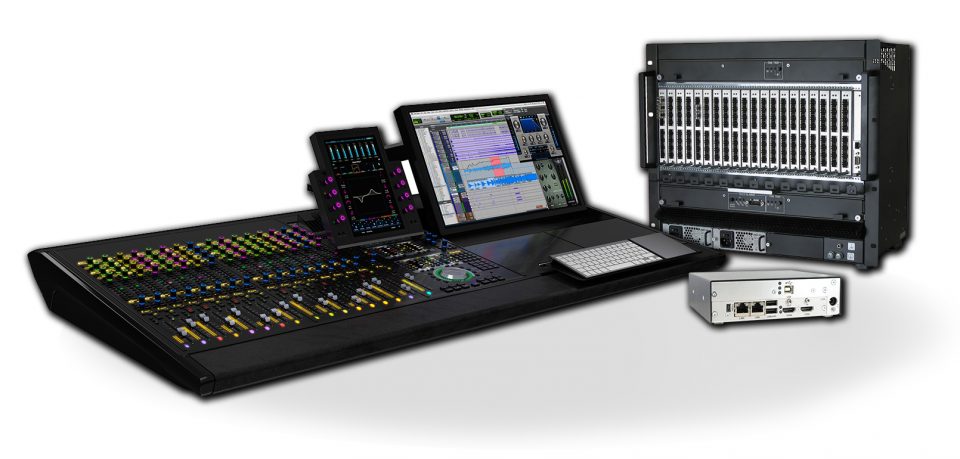AES 2016: IHSE USA To Demo Network KVM for Avid Pro Tools S6 Audio Control Surface
Story Highlights
At the 141st International AES Convention in Los Angeles, IHSE USA will showcase the latest KVM network capabilities integrated into the Pro Tools | S6 audio control surface at stand 203 in the Avid Partner’s Pavilion.
The S6 modular control surface now includes network KVM options to better integrate switching between multiple digital audio workstations. This interface is based on the IHSE KVM protocol. With networked KVM capabilities enabled, Avid S6 users can enjoy the benefits of integrated KVM control to take advantage of faster workflows and extended visual feedback during editing sessions. Through the S6 Master Module, the central hub of the S6 surface, users can configure the network KVM to allow easy mixing and control of multiple music and/or audio post projects created on different audio workstations simultaneously — all from a single control surface.
This new approach to advanced audio post and mixing offers users the ability to set up soft-key commands easily to operate different sources in a way that is completely transparent to the user. With only a few settings in the Master Module, operators can assign soft keys to switch immediately to and from different workstations. Another effective advantage of the IHSE KVM integration is the ability to define individual tracks of a fader module so that they automatically change to follow the preassigned sources defined through the KVM settings. This capability enables audio professionals to accelerate recording, editing, and mixing workflows in a more efficient and profitable process.
For several years now, IHSE’s KVM solutions have been part of many Avid-based audio-mixing studios across the world, including Sonic Magic Studios, Technicolor Sound, Deluxe, Todd Soundelux, and Electric Entertainment. Meanwhile, with a thousand Pro Tools | S6 systems sold to leading studios and production facilities worldwide and more than 35,000 users, Avid has the industry’s most open architecture for third-party connectivity, enabling comprehensive solutions for content creation, management, and distribution. The integration of IHSE’s API for network control of KVM further expands Avid’s partner ecosystem.
“The integration with the Avid S6 system was something we were very keen on. It enables the workstation monitor to literally ‘follow’ what you’re working on as you work on the control surface,” says Jonathan Wales, CEO, Wildfire Sonic Magic. “Everyone loves it here, and we are thrilled with such integrations.”
“Pro Tools | S6 delivers efficient workflows for fast precision mixing, and with the IHSE KVM, it’s now faster and easier to set up and configure than ever before,” says Tim Carroll, vice president of product management for Audio at Avid. “We selected IHSE’s Draco tera as our preferred KVM solution because of its ultra-fast switching, intelligent scalability, and simple user interface. The performance of the KVM is so fast that the audio-mixing engineer cannot perceive a switch has actually been made.”
During the development process, the IHSE engineering staff worked closely with Avid’s technical team to support KVM protocol development, implementing the necessary features and connectivity between the KVM switch and the S6 master console.
“The Avid technical team is a remarkable group of talented individuals, and we were impressed with their ability to integrate quickly the API for KVM,” says Dan Holland, marketing manager for IHSE USA. “With the large number of Avid users today and the success of the Pro Tools | S6 system worldwide, we see this as a growth opportunity for KVM in the audio mixing and production markets.”
IHSE provides KVM matrix switchers in sizes ranging from eight ports to 576 ports. Users manage the system via RS-232 or Ethernet control, and extender modules are available to support DVI, HDMI, and DisplayPort video formats as well as USB, audio, and RS-422. Extender enclosures can be built to support two, four, six, or 21 cards and allow for optional redundant power. Extender cabling interconnects are available in Cat5e/6/7 or fiber-optic cables.

